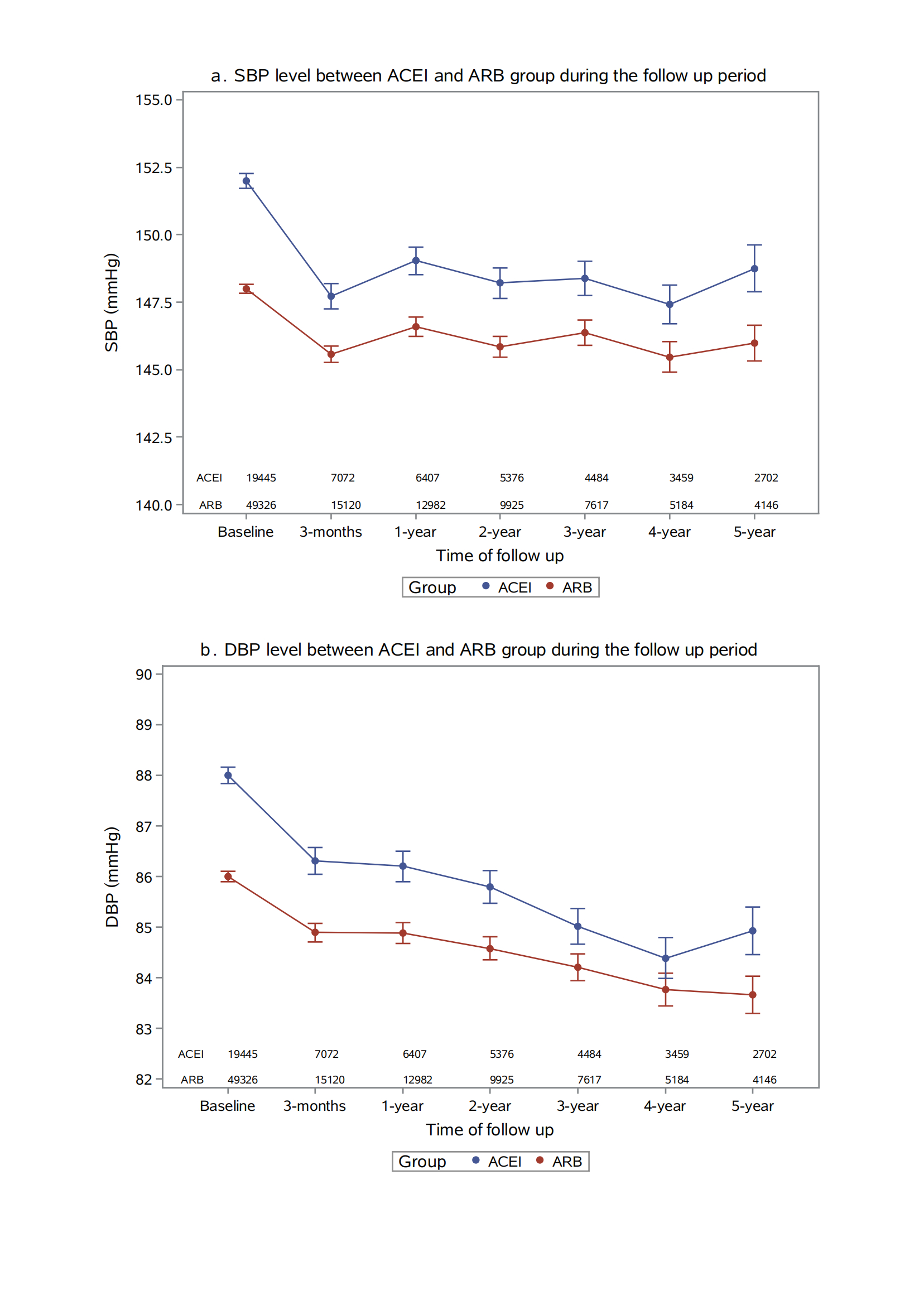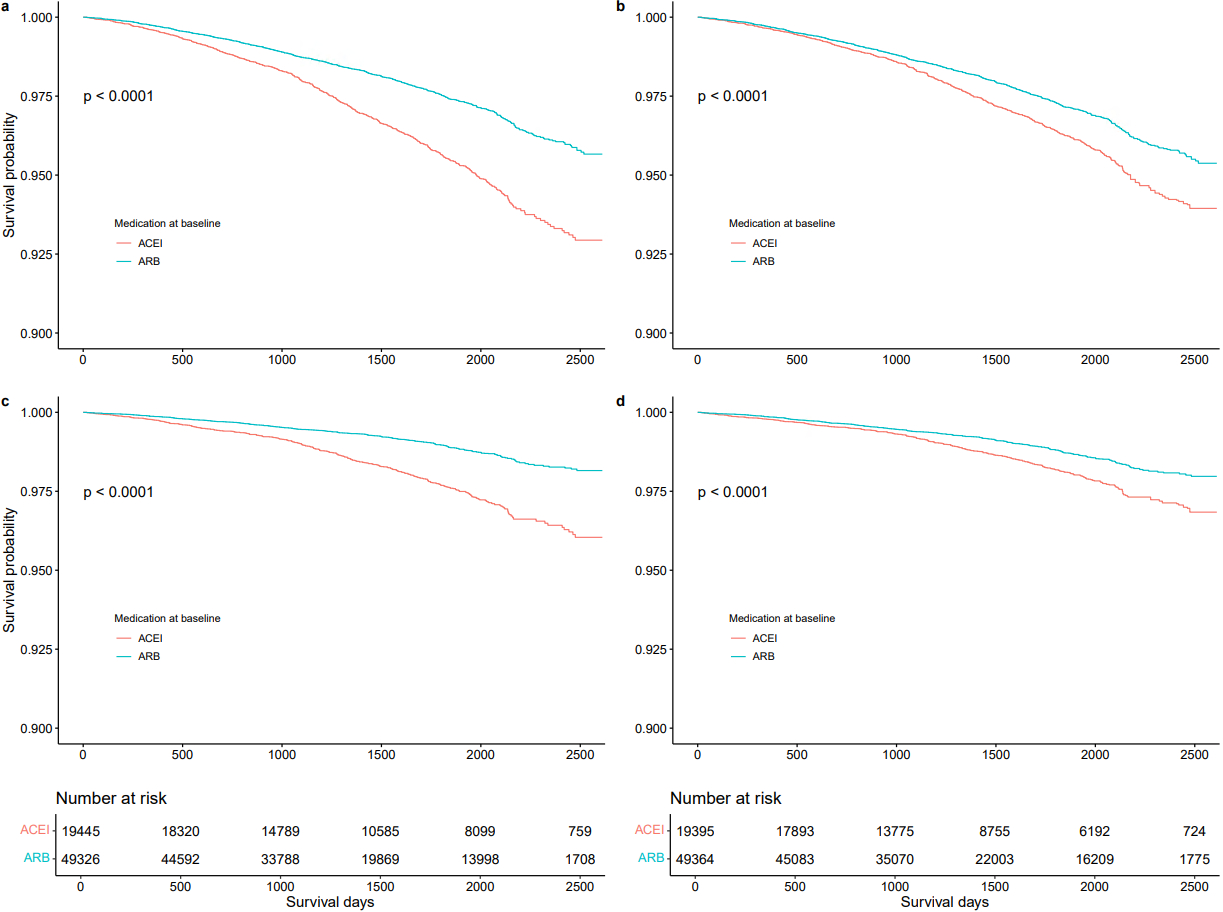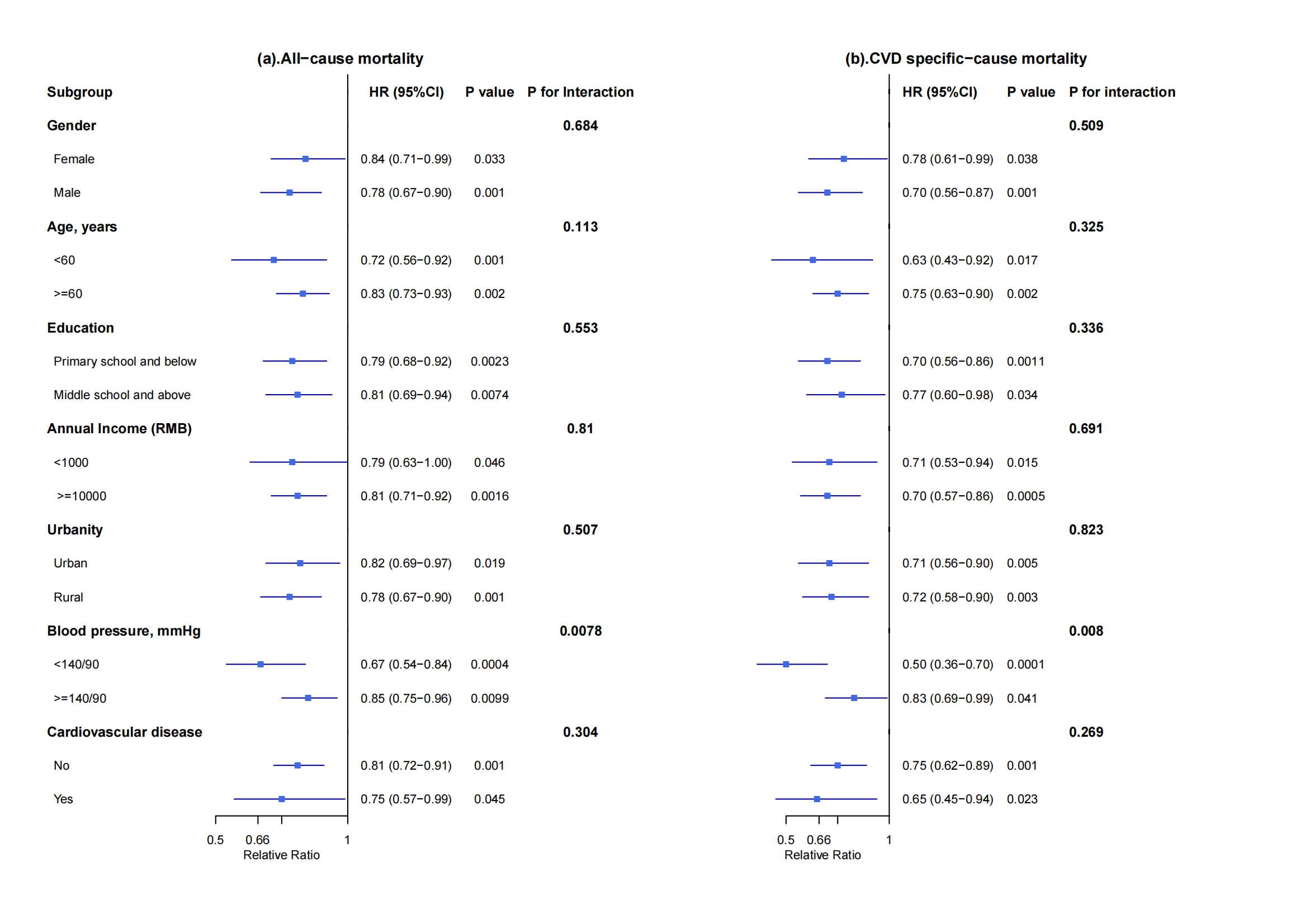Final ID: P-105
Comparative Effectiveness between Angiotensin Receptor Blockers and Angiotensin-Converting Enzyme Inhibitors on Mortality: a Nationwide, Population-based, Prospective Cohort Study in China
Abstract Body: Background: Contemporary evidence comparing the efficacy of angiotensin-converting enzyme inhibitors (ACEIs) versus angiotensin II receptor blockers (ARBs) on long-term outcomes in patients with hypertension is sparse and inconsistent. The aim is to compare the effectiveness of ACEI monotherapy versus ARB monotherapy on all-cause death and cardiovascular death.
Methods: Based on a nationwide, population-based prospective cohort project, which covered 318 study sites from 2014 to 2021 in China. Detailed information was collected by questionnaire, physical measurement, and blood test. Participants aged 35-75 years with hypertension and taking ACEI or ARB monotherapy once daily, and with good medication adherence at baseline were included. Information on mortality was followed up until 31 December 2021. Stabilized inverse probability treatment weighting (IPTW) was applied to compare the effectiveness.
Results: 68 771 (49326 ARB, 19445 ACEI) participants were finally included, with a mean age of 59.9±8.3 years and 40.2% being female. During a median follow-up time of 44 months, 785 cardiovascular deaths and 1657 deaths were recorded. Compared with ACEI monotherapy, ARB monotherapy was associated with a quarter relative risk reduction of cardiovascular death (IPTW rates: 0.95 % Vs 1.43%, HR=0.73 [95%CI, 0.62-0.87]) and one-fifth relative risk reduction of all-cause death (IPTW rates: 2.13% Vs 2.84%, HR=0.80 [95%CI, 0.71-0.89]). These differences remained consistent after further adjusting for blood pressure and with differences more pronounced in patients with controlled and newly onset hypertension. Sensitive analysis and subgroup analysis yielded consistent results.
Conclusions: Attention should be paid that ARB can be preferred to ACEI in patients with hypertension in terms of long-term health outcomes.
Funding: This work was supported by the Chinese Academy of Medical Sciences Innovation Fund for Medical Science (2021-I2M-1-011), and the National High Level Hospital Clinical Research Funding (2022-GSP-GG-4, NCRCSZ-2023-016).
Keywords: Hypertension, Angiotensin receptor blocker, Angiotensin-converting enzyme inhibitor, Mortality, Comparative effectiveness
Methods: Based on a nationwide, population-based prospective cohort project, which covered 318 study sites from 2014 to 2021 in China. Detailed information was collected by questionnaire, physical measurement, and blood test. Participants aged 35-75 years with hypertension and taking ACEI or ARB monotherapy once daily, and with good medication adherence at baseline were included. Information on mortality was followed up until 31 December 2021. Stabilized inverse probability treatment weighting (IPTW) was applied to compare the effectiveness.
Results: 68 771 (49326 ARB, 19445 ACEI) participants were finally included, with a mean age of 59.9±8.3 years and 40.2% being female. During a median follow-up time of 44 months, 785 cardiovascular deaths and 1657 deaths were recorded. Compared with ACEI monotherapy, ARB monotherapy was associated with a quarter relative risk reduction of cardiovascular death (IPTW rates: 0.95 % Vs 1.43%, HR=0.73 [95%CI, 0.62-0.87]) and one-fifth relative risk reduction of all-cause death (IPTW rates: 2.13% Vs 2.84%, HR=0.80 [95%CI, 0.71-0.89]). These differences remained consistent after further adjusting for blood pressure and with differences more pronounced in patients with controlled and newly onset hypertension. Sensitive analysis and subgroup analysis yielded consistent results.
Conclusions: Attention should be paid that ARB can be preferred to ACEI in patients with hypertension in terms of long-term health outcomes.
Funding: This work was supported by the Chinese Academy of Medical Sciences Innovation Fund for Medical Science (2021-I2M-1-011), and the National High Level Hospital Clinical Research Funding (2022-GSP-GG-4, NCRCSZ-2023-016).
Keywords: Hypertension, Angiotensin receptor blocker, Angiotensin-converting enzyme inhibitor, Mortality, Comparative effectiveness
More abstracts on this topic:
ACE2 Amplification, unlike ACE inhibition, does not cause an increase in plasma renin: potential therapeutic implications
Wysocki Jan, Shakaib Yusuf, Ismail Ahmed, Alhusen Ahmad, Batlle Daniel
Evidence for An Important Physiological Role of Bradykinin B2 Receptors in The Renomedullary Interstitial cells of The Kidney in Angiotensin II-induced Hypertension in MiceLi Xiao, Hassan Rumana, Katsurada Akemi, Sato Ryosuke, El-dahr Samir, Zhang Ming-zhi, Harris Ramond, Zhuo Jia



